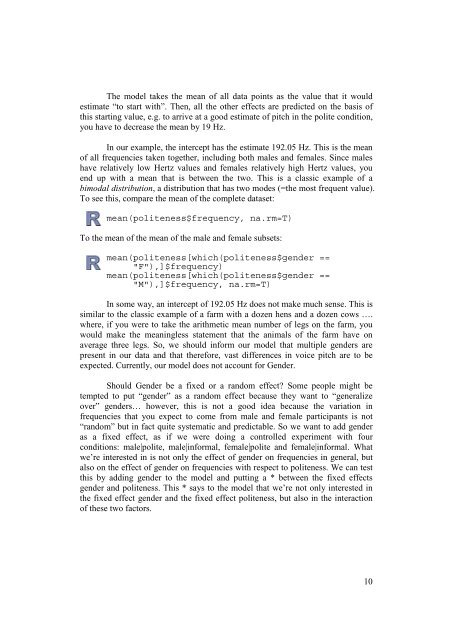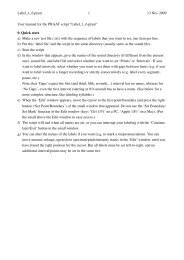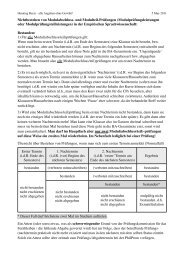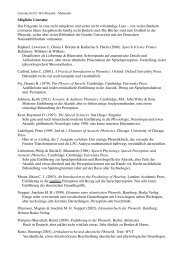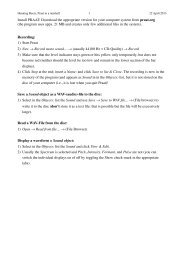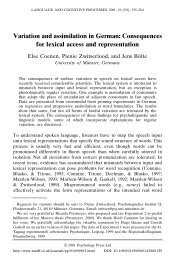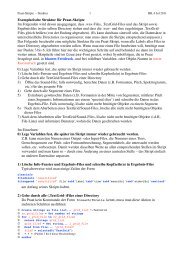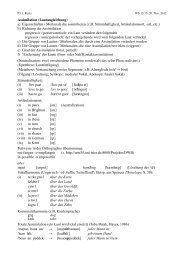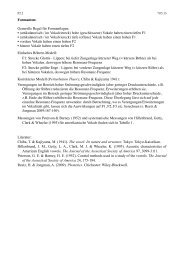A very basic tutorial for performing linear mixed
A very basic tutorial for performing linear mixed
A very basic tutorial for performing linear mixed
Create successful ePaper yourself
Turn your PDF publications into a flip-book with our unique Google optimized e-Paper software.
The model takes the mean of all data points as the value that it would<br />
estimate “to start with”. Then, all the other effects are predicted on the basis of<br />
this starting value, e.g. to arrive at a good estimate of pitch in the polite condition,<br />
you have to decrease the mean by 19 Hz.<br />
In our example, the intercept has the estimate 192.05 Hz. This is the mean<br />
of all frequencies taken together, including both males and females. Since males<br />
have relatively low Hertz values and females relatively high Hertz values, you<br />
end up with a mean that is between the two. This is a classic example of a<br />
bimodal distribution, a distribution that has two modes (=the most frequent value).<br />
To see this, compare the mean of the complete dataset:<br />
mean(politeness$frequency, na.rm=T)<br />
To the mean of the mean of the male and female subsets:<br />
mean(politeness[which(politeness$gender ==<br />
"F"),]$frequency)<br />
mean(politeness[which(politeness$gender ==<br />
"M"),]$frequency, na.rm=T)<br />
In some way, an intercept of 192.05 Hz does not make much sense. This is<br />
similar to the classic example of a farm with a dozen hens and a dozen cows ….<br />
where, if you were to take the arithmetic mean number of legs on the farm, you<br />
would make the meaningless statement that the animals of the farm have on<br />
average three legs. So, we should in<strong>for</strong>m our model that multiple genders are<br />
present in our data and that there<strong>for</strong>e, vast differences in voice pitch are to be<br />
expected. Currently, our model does not account <strong>for</strong> Gender.<br />
Should Gender be a fixed or a random effect? Some people might be<br />
tempted to put “gender” as a random effect because they want to “generalize<br />
over” genders… however, this is not a good idea because the variation in<br />
frequencies that you expect to come from male and female participants is not<br />
“random” but in fact quite systematic and predictable. So we want to add gender<br />
as a fixed effect, as if we were doing a controlled experiment with four<br />
conditions: male|polite, male|in<strong>for</strong>mal, female|polite and female|in<strong>for</strong>mal. What<br />
we’re interested in is not only the effect of gender on frequencies in general, but<br />
also on the effect of gender on frequencies with respect to politeness. We can test<br />
this by adding gender to the model and putting a * between the fixed effects<br />
gender and politeness. This * says to the model that we’re not only interested in<br />
the fixed effect gender and the fixed effect politeness, but also in the interaction<br />
of these two factors.<br />
10


